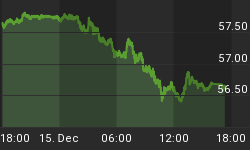According to the Department of Treasury's Auction Staff, the U.S. auctioned $8.8 trillion in Bills, Notes and Bonds in fiscal year 2009. That number is greater than the entire publicly traded debt, which is currently $8.4 trillion. The reason for the enormous amount of debt issuance is due to our surging annual deficits and rollovers that must occur more frequently because of the government's decision to issue debt on the short end of the yield curve.
The astronomical size of debt the Treasury must auction each year begs a question; who will buy it? The U.S. saved $464.9 billion last year and is currently saving at a $304 billion annual rate in March. China liquidated $34 billion in Treasuries in December of 2009, while Japan and Europe are struggling to meet their own government obligations.
Since we do not have the domestic savings to fund our own debt and foreigners may not have the will or means to continue to funnel their savings to the U.S., the result is we must depend on current holders to rollover their debt on a continual basis. However, if interest rates begin to rise to their historical levels (the average yield on the 10 year note is 7.3%) investors may balk at rolling over their debt, which would increase our interest rate expenses and could bankrupt the country. Of course, that leaves our central bank as the buyer of last resort and is the primary reason why gold is rising in all currencies and recently reached an all time nominal high in U.S. dollars.
The U.S. is now more addicted to artificially-produced low interest rates than at any other time in her history. But that's not just my opinion. Listen to what Ben Bernanke said before the House Financial Services Committee regarding whether the U.S. faces a debt crisis similar to Greece; "It's not something that is 10 years away. It affects the markets currently...It is possible that the bond market will become worried about the sustainability [of deficits over $1 trillion] and we may find ourselves facing higher interest rates even today."
Separately, Bloomberg reports that the "Maestro" himself, Alan Greenspan is so concerned about a sudden sharp increase in interest rates that every day he checks the rate of the 10 year note and 30 year bond calling them, "the critical Achilles heel of the economy."
And what does China think of the fiscal state of the country and the precarious state of our bond market? Deputy Governor of the People's Bank of China Zhu Min said in December that; "the world does not have so much money to buy more U.S. Treasuries."
The United States is the largest debtor nation in history. Our continued solvency depends upon low interest rates. But low rates are engendered either naturally from increased savings or artificially from money printing. Without having the adequate savings to bring down rates the Fed has supplanted savings with monetization of debt. However, money printing eventually leads to intractable inflation and will send bond yields much higher, especially on the long end of the curve.
To make matters worse, we currently see the difference between revenue and spending headed further in the wrong direction. The budget deficit for the month of April was reported to be $82.7 billion. That figure was nearly 4 times last year's reported deficit in April which was $20.9 billion. The April shortfall was the second for that month since 1983. The deficit for fiscal 2010 to date, which ends in October, is $799.7 billion.
Revenue fell 7.9% YOY while spending increased 14.2%. According to the CBO, the nation's publicly traded debt will reach 90% of GDP in 2020 and, most importantly, interest payments are projected to quadruple to more than $900 billion annually by that year. Of course, as daunting as that trillion dollar annual interest rate expense will become, it could be much greater if rates do in fact rise.
Indeed, if rates rise significantly the country will face a liquidity and solvency crisis the likes of which the planet has never before witnessed. There is a significant amount of pent-up selling pressure in our bond market. Nearly fifty percent of our publicly traded debt is held by foreigners and 63% of foreign central bank reserves are held in dollars.
The Fed must quickly move away from its zero percent interest rate policy, otherwise inflation will ravage the country just as it has done every other time the Fed has taken rates below inflation and left them there for a protracted period. If they delay too long, they will be forced to bring the yield curve much higher to fight that insidious inflation.
It seems to me the sooner they move the less they will have to raise rates. Therefore, it's imperative for the Fed to act now before they are forced to aggressively raise rates to fight inflation or the market forces interest rates higher on its own; which, given our extreme level of debt will render the U.S. insolvent.
















